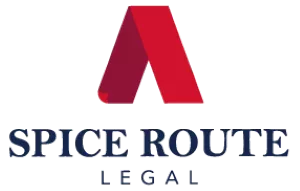- within Litigation and Mediation & Arbitration topic(s)
- in India
- with readers working within the Law Firm industries
I. INTRODUCTION
Food for special dietary uses, functional foods, nutraceuticals or health supplements are specifically processed or formulated to meet specific dietary requirements arising from particular physical or physiological conditions, diseases, or disorders1 . These types of foods exhibit notable differences in composition compared to ordinary foods of a similar nature. They may incorporate ingredients such as plants, botanicals, minerals, vitamins, substances of animal origin, and dietary supplements, among others, to enhance total dietary intake.
To regulate these distinct food categories, the Food Safety and Standards Authority of India ("FSSAI") introduced the Food Safety and Standards (Health Supplements, Nutraceuticals, Food for Special Dietary Use, Food for Special Medical Purpose, Prebiotic and Probiotic Food) Regulations, 20222 ("2022 Regulations").
The scope of the 2022 Regulations extends to various categories of food products that are specifically processed or formulated for targeted nutritional or dietary purposes. These regulations are applicable to the following categories:

The 2022 Regulations mandate that such specified products should be clearly distinguishable from ordinary foods meant for general consumption, owing to their unique composition. In contrast to the 2016 Regulations, the 2022 Regulations exclude non-specified foods, such as novel foods and unspecified ingredients, even if they are intended for use within any of the aforementioned categories. For such ingredients or products, approval must be sought in compliance with the Food Safety and Standards (Approval for Non-Specific Food and Food Ingredients) Regulation, 2017.
II. KEY COMPLIANCES IN TERMS OF COMPOSITION
As per the 2022 Regulations, a set of requirements such as quality of product, quantity of nutrients, etc., are required to be complied with by all food business operators ("FBO"). Some of these requirements are as follow:
- No hormones or steroids or psychotropic ingredients must be
added to any of the product categories specified in these
regulations.
- The FSSAI may define distinct purity criteria for ingredients
in the specific categories of food items covered under these
regulations. FBOs are required to furnish information regarding the
purity criteria applied to ingredients during the licensing
process.
- Any form of a mixture of ingredients in a formulation must be
based on scientific and technical evidence, subject to the
requirement that such evidence be furnished to the FSSAI upon
request.
- The tolerance limit for variation in the case of food categories falling under these regulations during sample analysis of finished products must be in accordance with the Food Safety and Standards (Labelling and Display) Regulations, 2020 ("2020 Regulations").
III. LABELLING AND DISPLAY REQUIREMENTS
The 2020 Regulations have played a significant role in increasing consumer awareness through a multitude of requirements such as declarations on labels, including the principal display panel ("PDP"), disclosures regarding food allergens, presence of food additives, the use of vegetarian and non-vegetarian logos, etc. In addition to the general requirements provided under the 2020 Regulations, foods such as health supplements or nutraceuticals are subject to the following additional labelling obligations under Regulation 5(12) of the 2022 Regulations:
- Front of the Pack
- Labels must prominently display the applicable product
category, including a 'HEALTH SUPPLEMENT/NUTRACEUTICAL/FOOD FOR
SPECIAL DIETARY USE/FOOD FOR SPECIAL MEDICAL PURPOSE/PREBIOTIC
FOOD/PROBIOTIC FOOD' declaration in capital and bold letters,
near the product's name or brand.
- If the product targets a specific age group or consumer group,
a clear statement to that effect must be included on the front of
the pack.
- Labels must prominently display the applicable product
category, including a 'HEALTH SUPPLEMENT/NUTRACEUTICAL/FOOD FOR
SPECIAL DIETARY USE/FOOD FOR SPECIAL MEDICAL PURPOSE/PREBIOTIC
FOOD/PROBIOTIC FOOD' declaration in capital and bold letters,
near the product's name or brand.
- Front or Back of the Pack
- Labels must contain the statement 'NOT FOR MEDICINAL
USE' in capital and bold letters, unless exempted under these
regulations.
- Essential information such as 'Recommended usage
level', 'Duration of usage' (where applicable), and
'Not to exceed the recommended daily usage' should be
prominently displayed.
- An advisory warning must be provided for potential dangers from
excessive consumption.
- Warnings about other precautions, known side effects (if any),
contraindications, and published product or drug interactions, as
applicable, should be included.
- Except for food for special dietary use and food for special
medical purpose categories, a statement indicating that the
'product is not a substitute for a varied diet', should be
included.
- Labels must include a warning statement advising consumers to
store the product out of reach of children.
- The quantity of nutrients, expressed in terms of the percentage of the relevant recommended daily allowances, should be mentioned unless exempted by other regulations in place.
- Labels must contain the statement 'NOT FOR MEDICINAL
USE' in capital and bold letters, unless exempted under these
regulations.
- Front or Back of the Pack or Accompanied Leaflet
- The label, accompanying leaflet, or other labelling and
advertisement should declare the amount of nutrients or substances
with nutritional or physiological effects present in the
product.
- Detailed information on the nature and purpose of the food product, along with instructions and precautions for its use, must be provided.
- The label, accompanying leaflet, or other labelling and
advertisement should declare the amount of nutrients or substances
with nutritional or physiological effects present in the
product.
In addition to the above requirements, the labels for each specified category of food products must comply with the specific requirements mentioned in the 2022 Regulations. The following information must be included on the label for the respective categories.
| Specified categories | Labelling requirement(s) |
| Health Supplements and Nutraceuticals | Every package of health supplement and nutraceutical must comply with the general requirements specified in Regulation 5(12). Food Authority may permit the term 'health supplements' on the label to be used interchangeably with the terms, 'dietary supplements' or 'food supplements'. |
| Food for Special Dietary Use |
Every package of food for special dietary use must comply with the following labelling requirements:
|
| Food for Special Medical Purpose |
Every package of food for special medical purpose must comply with the following labelling requirements:
|
| Probiotic Food |
Every package of Probiotic must comply with the following labelling requirements:
|
I. PACKAGING REQUIREMENTS
The Food Safety and Standards (Packaging) Regulations, 2018 ("2018 Regulations") broadly involve provisions related to the type of packaging material used for a product and the manner of packaging of food products. These regulations are instrumental in safeguarding consumer interests by ensuring that FBOs use safe packaging material and adopt appropriate packaging methods. Some of the relevant requirements for the same include the following:
- Packaging material that comes into direct contact with food must meet food grade quality standards as specified under Regulation 4 of the 2018 Regulations.
- Packaging material is required to be suitable for the specific product, considering factors such as storage, sealing, packaging, and transportation conditions.
- Food products are to be packed in clean, hygienic, and tamper-proof packaging or containers.
- Sealing material for the product must be compatible with the product itself, the containers, and closure systems within the containers.
II. CONCLUSION
The aim of the 2022 Regulaeons is to make the food industry more 'stakeholder-friendly' by implemeneng strict guidelines for substaneaeng health claims on the labelling and packaging of specially processed food products while upholding product quality and safety standards. However, to create a more robust system, the FSSAI must establish clear safety standards, conduct rouene inspeceons, as well as execute regular surveys to idenefy areas for further improvement. While the 2022 Regulaeons mark a significant step forward, addressing the challenges through coordinated efforts will be crucial in ensuring the availability of safe and nutrieous food.
Footnotes
1. Section 22 of the Food Safety and Standard Act, 2006.
2. Superseded the Food Safety and Standards (Health Supplements, Nutraceuticals, Food for Special Dietary Use, Food for Special Medical Purpose, Functional Food, and Novel Food) Regulations, 2016 (“2016 Regulations”).
3. Osmolality is a measurement of the total number of solutes in a liquid solution expressed in osmoles of solute particles per kilogram of solvent (osmol/kg).
4. Osmolarity is a measurement of the total number of solutes in a liquid solution expressed in osmoles of solute particles per litre of solvent (osmol/l).
5. Acid-base balance is the mechanism the body uses to keep its fluids close to neutral pH so that the body can function normally.
6. Renal solute load are all solutes, of endogenous or dietary origin, that require excretion by the kidneys.
7. Potential renal solute load are solutes of dietary origin that would need to be excreted in the urine if none were diverted into synthesis of new tissue and none were lost through non-renal routes.
The content of this article is intended to provide a general guide to the subject matter. Specialist advice should be sought about your specific circumstances.






